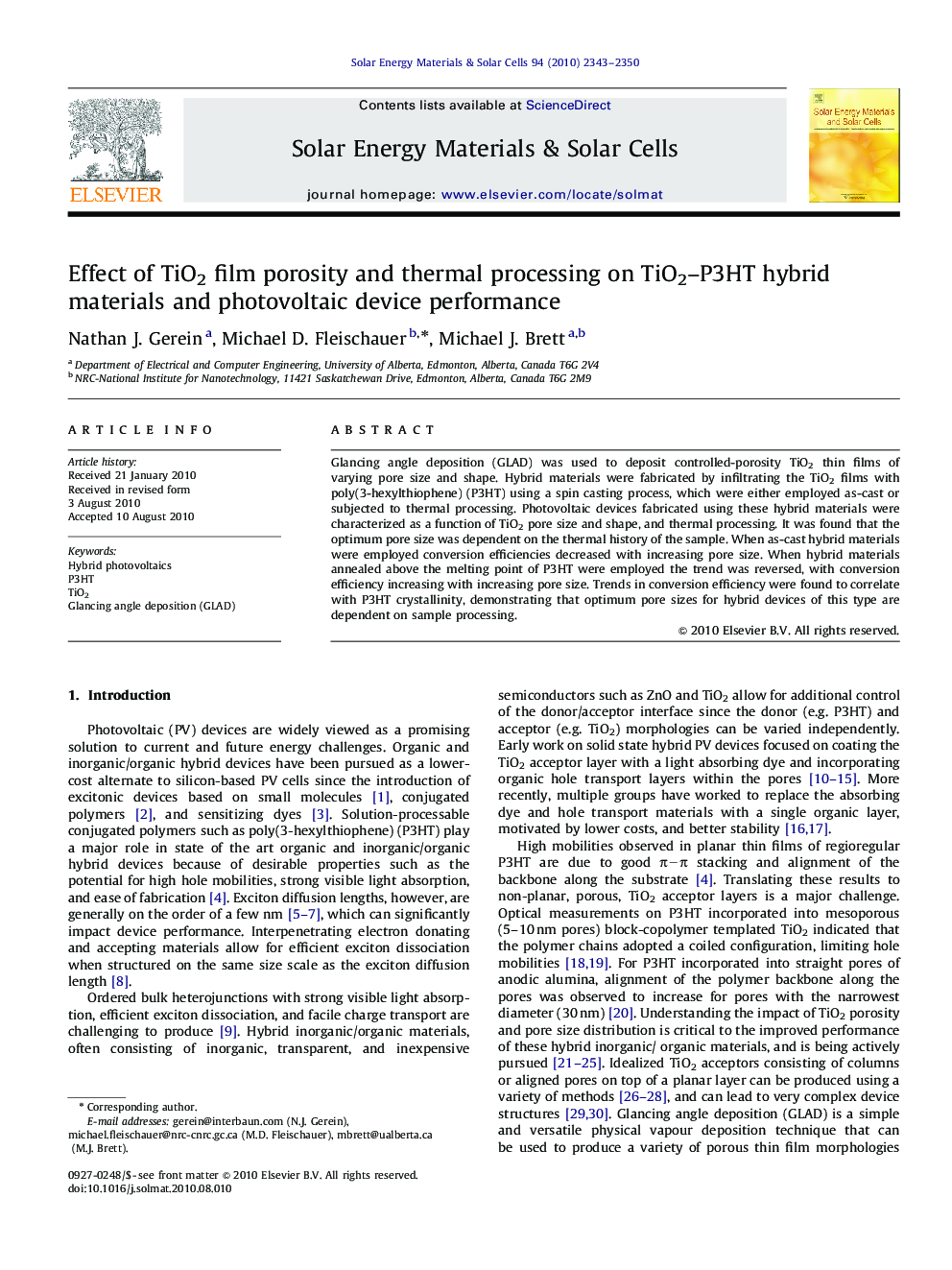| Article ID | Journal | Published Year | Pages | File Type |
|---|---|---|---|---|
| 79848 | Solar Energy Materials and Solar Cells | 2010 | 8 Pages |
Glancing angle deposition (GLAD) was used to deposit controlled-porosity TiO2 thin films of varying pore size and shape. Hybrid materials were fabricated by infiltrating the TiO2 films with poly(3-hexylthiophene) (P3HT) using a spin casting process, which were either employed as-cast or subjected to thermal processing. Photovoltaic devices fabricated using these hybrid materials were characterized as a function of TiO2 pore size and shape, and thermal processing. It was found that the optimum pore size was dependent on the thermal history of the sample. When as-cast hybrid materials were employed conversion efficiencies decreased with increasing pore size. When hybrid materials annealed above the melting point of P3HT were employed the trend was reversed, with conversion efficiency increasing with increasing pore size. Trends in conversion efficiency were found to correlate with P3HT crystallinity, demonstrating that optimum pore sizes for hybrid devices of this type are dependent on sample processing.
